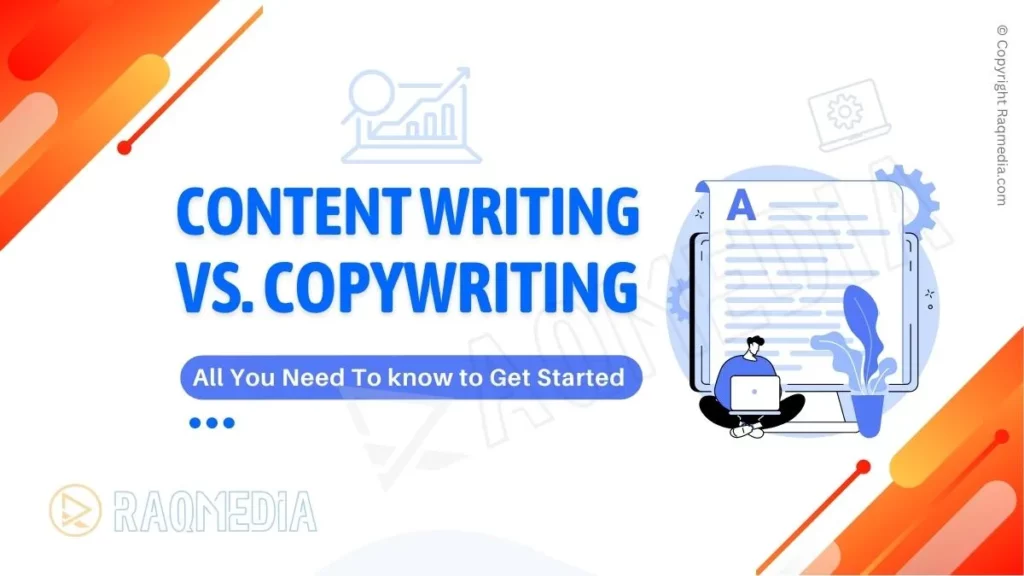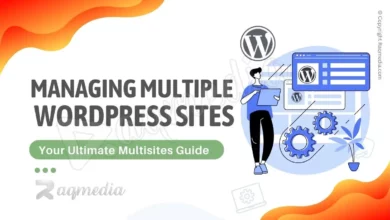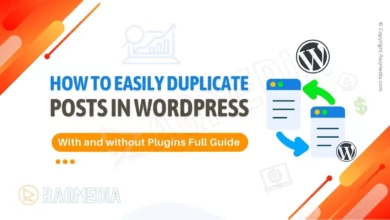Introduction:
When it comes to creating effective marketing materials, understanding the differences between content writing vs. copywriting is crucial. While both play essential roles in marketing strategies, they have distinct purposes and approaches.
In this article, we will explore the distinctions between content writing and copywriting, highlighting their purposes, target audiences, writing styles, SEO considerations, platforms and formats, and more. By understanding these differences, marketers can make informed decisions about how to leverage each discipline for maximum impact.
What is Copywriting?
Copywriting is a dynamic craft that creates compelling written content. It captures attention, sparks curiosity, and motivates action. It includes ads, sales letters, and website copy, using words to connect with the target audience.
Copywriting combines creativity and strategy. It distills a brand's essence and communicates its value. Skilled copywriters craft concise statements that inspire and connect.
The objective is to captivate and maintain interest. Copywriters understand human psychology and storytelling. They use emotional appeal, logic, and vivid imagery to create resonance.

Copywriting extends beyond traditional advertising. It includes digital platforms like websites, social media, and emails. Copywriters optimize content with SEO techniques, enhancing visibility and building connections.
In summary, copywriting harnesses words to drive action and build connections. It balances creativity, strategy, and understanding the audience. Copywriters breathe life into brands, enabling success in communication.
What is Content Writing?
Content writing is a versatile skill that drives effective communication in the digital landscape. It creates valuable, engaging written content that captures readers' attention. From blog posts to social media captions, content writing connects with target audiences.
At its core, content writing curates information that resonates with readers. Skilled writers blend creativity, research, and strategy to inform and entertain.
The goal is to provide value. Content addresses needs, offers insights, and builds trust with the audience.
Content writing and search engine optimization (SEO) go hand in hand. Writers optimize content with keywords to increase visibility and attract organic traffic.
In the digital era, content writing is integral to marketing strategies. It aligns with brand values, drives engagement, and maintains consistent messaging.
In summary, content writing combines creativity, research, and strategy to connect with audiences. It drives communication, builds authority, and fosters engagement in the digital realm.
Purpose and Goals:
Content writing Purpose and Goals:
Content writing aims to inform, educate, and engage the audience. It serves as a means of building brand authority, establishing credibility, and nurturing relationships with the target audience. The goals of content writing include providing valuable information, answering questions, and establishing the brand as a trusted source of knowledge.
Copywriting Purpose and Goals:
Copywriting, on the other hand, focuses on persuasive and influential writing to drive sales, conversions, and desired actions from the audience. Its primary purpose is to capture attention, create desire, and motivate the audience to take a specific action, such as making a purchase, signing up for a newsletter, or clicking on a link.
Target Audience and Tone:
Content writing: The target audience for content writing varies depending on the specific industry, niche, or topic. Content writers often aim to reach a broader audience, including both existing and potential customers. The tone and style of content writing typically lean towards being informative, educational, and conversational, presenting information in a clear and concise manner.
Copywriting: Copywriting, on the other hand, targets a narrower audience that is already interested in the product or service being promoted. Copywriters tailor their messaging to appeal to specific demographics, interests, and pain points. The tone and style of copywriting are persuasive, captivating, and emotionally-driven, aiming to evoke a desired response or action from the audience.
Writing Style and Structure:
Content writing Style and Structure:
Content writing emphasizes informative and educational elements. Writers focus on providing valuable insights, relevant examples, and actionable tips. The writing style is often characterized by storytelling, narrative elements, and engaging language that keeps the reader interested. Content writing follows a clear and logical structure to ensure the information is presented in a coherent manner.
Copywriting Style and Structure:
Copywriting thrives on being persuasive and compelling. Copywriters use powerful language, emotional triggers, and persuasive techniques to create a sense of urgency or desire. They focus on crafting attention-grabbing headlines, compelling hooks, and concise messaging that directly communicates the benefits and unique selling propositions of a product or service.
SEO Considerations:
Content writing: In content writing, search engine optimization (SEO) plays a significant role in driving organic traffic to the website or platform. Content writers conduct keyword research, optimize their content with relevant keywords, and create engaging, readable content that satisfies both the audience and search engine algorithms. The focus is on providing value and quality information that resonates with the target audience.
Copywriting: SEO considerations in copywriting are more focused on balancing persuasive language and SEO techniques. Copywriters ensure that the copy incorporates relevant keywords without compromising the persuasive power of the message. They aim to strike a balance between optimizing for search engines and creating compelling, persuasive content that drives conversions.
Platforms and Formats:
Content writing: Content writing can take various forms, depending on the platform and format. It includes blog articles, informative guides, social media posts, whitepapers, case studies, and more. Content writers adapt their writing style and format to suit the specific platform and engage the audience effectively.
Copywriting: Copywriting primarily focuses on promotional materials and direct-response marketing. It includes advertisements, marketing campaigns, sales pages, landing pages, email marketing, and newsletters. Copywriters tailor their writing to fit the platform and format, ensuring that the messaging aligns with the marketing goals and drives desired actions from the audience.
Call to Action (CTA):
Content writing: While content writing does not typically prioritize direct sales, it often includes calls to action (CTAs) that encourage engagement and further actions from the audience. CTAs may invite readers to leave comments, subscribe to newsletters, follow social media accounts, or explore related content. The goal is to foster a sense of community and establish ongoing communication with the audience.
Copywriting: In copywriting, CTAs are essential for driving conversions and sales. Copywriters create compelling CTAs that urge the audience to take immediate action, such as making a purchase, signing up for a free trial, or contacting the business. The CTAs are carefully crafted to generate a sense of urgency and motivate the audience to act without delay.
Collaboration with Design and Visuals:
Content writing: Content writing can be enhanced by collaboration with designers and visual elements. Visuals such as infographics, images, and illustrations can complement the written content, making it more engaging and visually appealing. Collaboration between content writers and designers ensures a cohesive and visually captivating experience for the audience.
Copywriting: Copywriting is closely intertwined with design and visuals. Copywriters work hand-in-hand with designers to create visually striking advertisements, marketing materials, and landing pages. The combination of compelling copy and eye-catching visuals maximizes the impact and effectiveness of the marketing message.
Metrics and Success Measurement:
Content writing: The success of content writing is often measured through engagement metrics such as the number of page views, time spent on page, social media shares, and comments. These metrics indicate the level of audience interest, engagement, and resonance with the content. Additionally, traffic metrics and conversions resulting from the content can provide valuable insights into its effectiveness.
Copywriting: Copywriting success is primarily measured through conversion-oriented metrics. These include conversion rates, click-through rates (CTR), and return on investment (ROI). The focus is on evaluating the effectiveness of the copy in driving desired actions and generating revenue or leads for the business.
Content Writing Vs. Copywriting: Which One Is Best For You?
Choosing between content writing and copywriting can be challenging, as they serve different purposes. Content writing informs and entertains through blog posts, articles, and e-books, while copywriting persuades in advertisements and sales materials.
The choice depends on your objectives and marketing funnel stage. Content writing builds credibility, attracts organic traffic, and nurtures relationships. Copywriting drives immediate action, generates leads, and boosts conversions. Sometimes, a combination of both is necessary. Ultimately, understanding your goals and target audience guides your decision, allowing you to establish a strong connection.
Conclusion:
Understanding the differences between content writing and copywriting is essential for marketers to leverage the strengths of each discipline effectively. While content writing aims to inform, educate, and engage the audience, copywriting focuses on persuasive and influential messaging to drive sales and conversions.
Both play vital roles in a comprehensive marketing strategy, and by harnessing the power of each, businesses can create compelling content, establish brand authority, and achieve their marketing goals.











Unsure of which type of writing is best for your brand? Determine which will help you achieve your goals: content writing or copywriting? Learn more now.
#ContentWriting #Copywriting #WritingSkills #MarketingCopy #ContentCreators #CopywritersLife #DigitalMarketing #ContentStrategy #CreativeWriting #BrandVoice #CopywritingTips #ContentMarketing #Copywriters #ContentCreation #WritingCommunity #CopywritingServices #SEOContent #WebCopy #ContentGoals #CopywritingSkills #WritingTips #ContentManagement #CopywritingAgency #ContentCreators #Copywriting101 #WritingForBusiness #ContentPromotion #CopywritingTricks #WritingVsCopywriting #ContentWritingTips